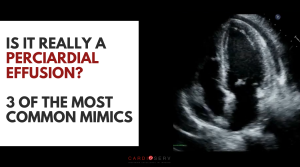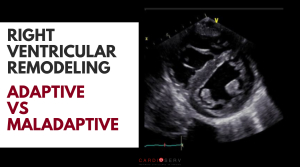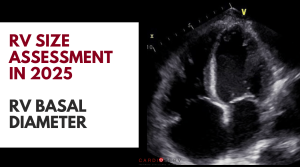Last Updated on January 30, 2024 by Hannes van der Merwe
QUALITY AND EASE
Remember, when we say Accreditation Hacks – the word ‘hack’ is a good thing! We provide timesaving hacks while improving quality. With our tips, suggestions and resources you have the ultimate combination of quality and ease. Our goal is to allow you to focus on excellence and to practice the highest level of quality possible with ease and simplicity
JUMP IN!
Where do you begin? We always recommend selecting Report Completeness as the first QI Measure to complete. Why? Because it’s the easiest to complete! You will enjoy a sense of accomplishment as you check your first completed measure off your list!
RECAP
Let’s bring you up to speed real quick! In Part 1 of our blog series we reviewed the new IAC Quality Improvement Measures that now include:
- Test Appropriateness
- Technical Quality
- Interpretive Quality
- Report Completeness
- Wildcard (modality specific)
In Part 2 we revealed the ultimate accreditation hack with new accreditation software called AccreditCoach. For the rest of the series we will break down the QI measures into bite size tasks that can be performed by everyone. So get ready to jump in to your first QI Measure…. Report Completeness!
REPORT COMPLETENESS
This measure requires evaluating final reports for completeness and timeliness. All modalities must complete this measure but only echo (adult and peds.) specifies the required number of 10 reports. We suggest all modalities pull at least 10 reports to review.
HACK #1: BREAK THIS TASK DOWN INTO 2 STEPS – GATHERING REPORTS AND COMPLETING THE MEASURE.

Sounds simple enough but by breaking the task down into baby steps that are small, quick and easy to accomplish you will be surprised the impact this will have on maintaining compliance. You only need to pull 10 reports that you can quickly print and put to one side. You’re already half way through this measure!!
5 Tips on Pulling Reports:
- Remember the 10 reports need to represent all the testing areas you are seeking accreditation in under your modality. For example, if you are seeking echo accreditation in the testing areas of echo, stress echo and TEE you would need to be sure to represent all these tests in your review. (Vascular testing areas may include carotids, arterials, venous, etc.)
- Remember you are only pulling a total of 10 reports not 10 per testing area!!
- Represent as many different reading physicians as possible
- You can assign this task to anyone – clinical, clerical or students
- If you work alone try printing reports while sitting at the reading station (first thing in the morning or at the end of the day). It doesn’t take long to just quickly print the 10 reports, you can review them later.
HACK #2: HAVE THE RIGHT TOOLS FOR THE JOB – COMPLETENESS FORMS

Pulling 10 reports was an easy quick step to get your feet wet with the QI program. Now what? The next step of report review can be just as painless with the right tools! The right tool for this task is a report checklist. Not a generic form asking if all demographics, measurements and report components are present, but rather, a detailed list of each required item. As consultants we automate this process through software but prior to software development we created a line by line checklist for each modality. Imagine you’re holding a report in your hand (Echo, vascular, nuclear, etc.) and I ask you if all the required demographics are included in the report?…could you answer that immediately without knowing the IAC reporting standards?? Now imagine instead I ask you specific questions like:
- Is the ordering physician listed?
- Are the patient’s height, weight and gender included?
See how much easier that is? Imagine how that opens up the possibilities of who can complete this QI measure!
Report Completeness Form
- Pull out the guidelines just one time to create your original form(s) – once your form is made you will not have to keep checking the standards over and over again!
- Include each and every reporting component in your form, don’t generalize; be specific!
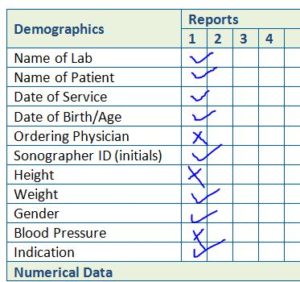
- Remember it will be easier to assign this task to other members of the lab if you make this easy, easy, easy!
- For example, if your report should include left ventricular size and function, do not just list one line item that states ‘Left Ventricle’ INSTEAD list each specific comment regarding the LV that you should be checking the report for.
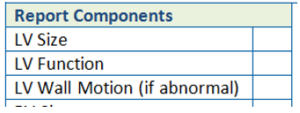
My reports are not compliant, now what?!
So you have heeded our advice, created a Report Review form and broke the Report Completeness Measure down into 2 steps. You gathered your 10 reports one week and put them aside (in less than 15 minutes!) The following week you used your new forms to complete your report review and again, you did this in less than 15 minutes! Everything is going great……but wait…… the reports are not compliant!
With first time accreditation this is expected! Even if you are an accredited lab it’s common to find the reports sometimes start to slip a little after accreditation. No worries! Remember, the theory behind QI Measures is that anything that is looked at gets better! Just by checking the reports for completeness and identifying areas that are missing you are already making progress towards improvement.
HACK #3: DON’T IGNORE DEFICIENCIES

Remember the point of any QI Measure is to identify areas for improvement. It’s ok to identify these areas; it’s just not helpful to ignore them! Here are some tips to help improve report completeness.
- Post the Report Completeness Checklist at the reading station so the reading physician can clearly see it!
- Make sure your reporting templates include areas to report on each component – make it easier for the physicians to be compliant.
- Reading Stations – set up fields for each required component.
- Dictation – Even if your doctor is still dictating he still is using some kind of guide, most likely your worksheet. Update your worksheet to include all the necessary demographics and report components. If the transcriptionist also receives the worksheet there is no need for the doctor to dictate all the demographics (height, weight and BP) as all that information will be on your worksheet.
- Whether your worksheet is a physical piece of paper or the electronic worksheet on a reading station you can help the interpreting physician by providing your comments and observations for each required component.
Stay Tuned!
Next week we will review another required QI Measure and share our timesaving hacks that allows you to achieve accreditation with quality and ease. Remember, the Intersocietal Accreditation Commission is always happy to answer questions and they provide a wealth of resources on their website. In addition, our team at CardioServ is always just a phone call away. Don’t be shy! Give us a call, schedule a free consultation and follow us on social media!


